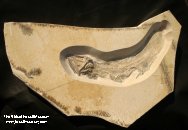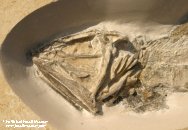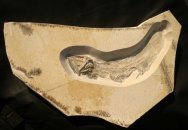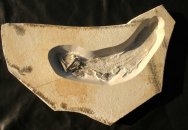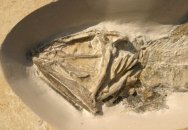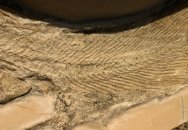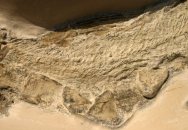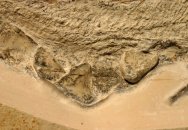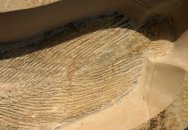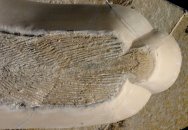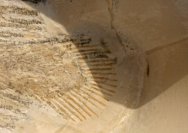Coccoderma nudum
Class Sarcopterygii, Subclass, Coelacanthimorpha, Order Coelacanthiformes, Family Family Laugiidae
Geological Time: Late Jurassic, Kimmeridgian Stage
Size:
Fossil Site: Solnhofen Limestone, Malm Zeta 2, Eichstatt, Germany
|
The
Coelacanths appear in the early Devonian fossil record, and ostensibly
became widely dispersed in the late Devonian and Carboniferous marine
environments. They were once believed to have gone extinct at the
end of the Cretaceous, until the first Latimeria Coelacanths are lobe-finned fish having pectoral and anal fins on fleshy stalks supported by bones, and the tail or caudal fin diphycercal (divided into three lobes), the middle one of which also includes a continuation of the notochord. Also see: Sarcoptergyii Fish Fossils Solnhofen Fossils |
